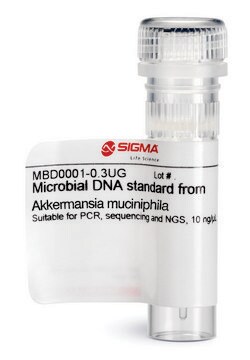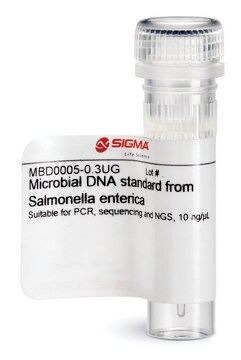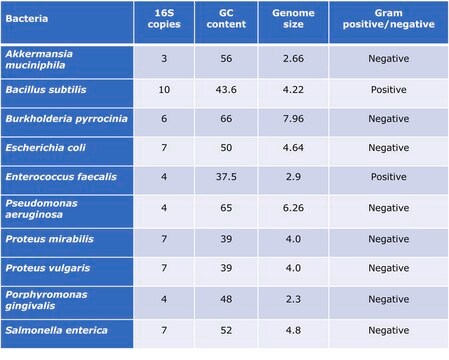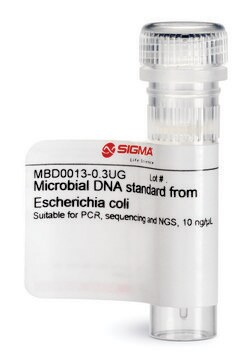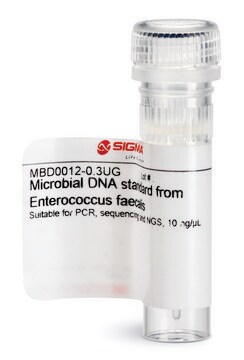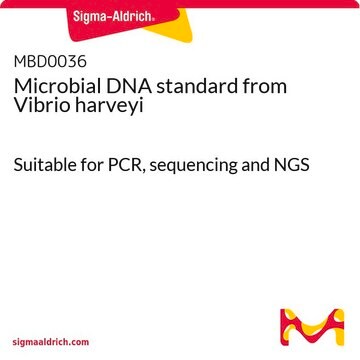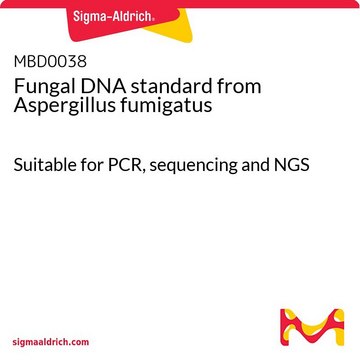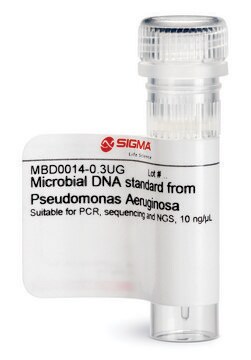推薦產品
一般說明
Standardization of sample analysis is currently needed in microbiome genomics research workflow. Lack of standardization can lead to biases and errors in common processes during sample preparation and analysis such as sample amplification, sequencing and bioinformatics analyses.1 Deinococcus rediodurans genomic DNA microbial standard can serve as standard for benchmarking the performance along the workflow of microbiomics or meta-genomics analyses and as a tool to increase reproducibility and allow comparison of results obtained by different labs.Since Deinococcus radiodurans is not a typical resident of the human microbiota it can serve as a spike-in standard in human microbiota genomics workflow analysis.
Deinococcus radiodurans is an extremophilic, heterotrophic, non-motile, non-spore-forming, aerobic tetracoccus bacterium. 2 The cell envelope of Deinococcus radiodurans stains as a gram-positive, but the two membranes that separated by a peptidoglycan layer, makes it more similar to typical gram-negative bacteria. 3 Deinococcus radiodurans is an extremophilic microorganism that can survive harsh conditions such as cold, high temperature, acid, alkali, resistance to desiccation, oxidative stress, ionizing radiation and ultraviolet radiation. 3 Mechanisms responsible for these extremophilic characteristics include: efficient repair of DNA damage 4, 5, Nucleotides Excision Repair (NER) 6, unique DNA mismatch repair (MMR) method 7 and efficient cellular mechanisms such as proteolytic protein for removal damaged and misfolded proteins, Nudix hydrolase 8 a broad-spectrum of transcription factor and a unique regulatory protein, which stimulates recA gene transcription after exposure to ionizing radiation 9.The large tolerance of the extremophile, Deinococcus radiodurans to the extraordinary conditions makes this bacterium as a tool for metabolic engineering 10.
Read here how to use our standards to ensure data integrity for your microbiome research.
Deinococcus radiodurans is an extremophilic, heterotrophic, non-motile, non-spore-forming, aerobic tetracoccus bacterium. 2 The cell envelope of Deinococcus radiodurans stains as a gram-positive, but the two membranes that separated by a peptidoglycan layer, makes it more similar to typical gram-negative bacteria. 3 Deinococcus radiodurans is an extremophilic microorganism that can survive harsh conditions such as cold, high temperature, acid, alkali, resistance to desiccation, oxidative stress, ionizing radiation and ultraviolet radiation. 3 Mechanisms responsible for these extremophilic characteristics include: efficient repair of DNA damage 4, 5, Nucleotides Excision Repair (NER) 6, unique DNA mismatch repair (MMR) method 7 and efficient cellular mechanisms such as proteolytic protein for removal damaged and misfolded proteins, Nudix hydrolase 8 a broad-spectrum of transcription factor and a unique regulatory protein, which stimulates recA gene transcription after exposure to ionizing radiation 9.The large tolerance of the extremophile, Deinococcus radiodurans to the extraordinary conditions makes this bacterium as a tool for metabolic engineering 10.
Read here how to use our standards to ensure data integrity for your microbiome research.
應用
The genomic DNA is provided at ≥10 ng/μl concentration in TE buffer pH 8.0.It is recommended to avoid freeze thaw cycles of this product.
適合性
PCR, sequencing, next generation sequencing
外觀
Liquid -The genomic DNA is provided at ≥10 ng/μl concentration in TE buffer pH 8.0
儲存類別代碼
12 - Non Combustible Liquids
水污染物質分類(WGK)
WGK 1
分析證明 (COA)
輸入產品批次/批號來搜索 分析證明 (COA)。在產品’s標籤上找到批次和批號,寫有 ‘Lot’或‘Batch’.。
我們的科學家團隊在所有研究領域都有豐富的經驗,包括生命科學、材料科學、化學合成、色譜、分析等.
聯絡技術服務
